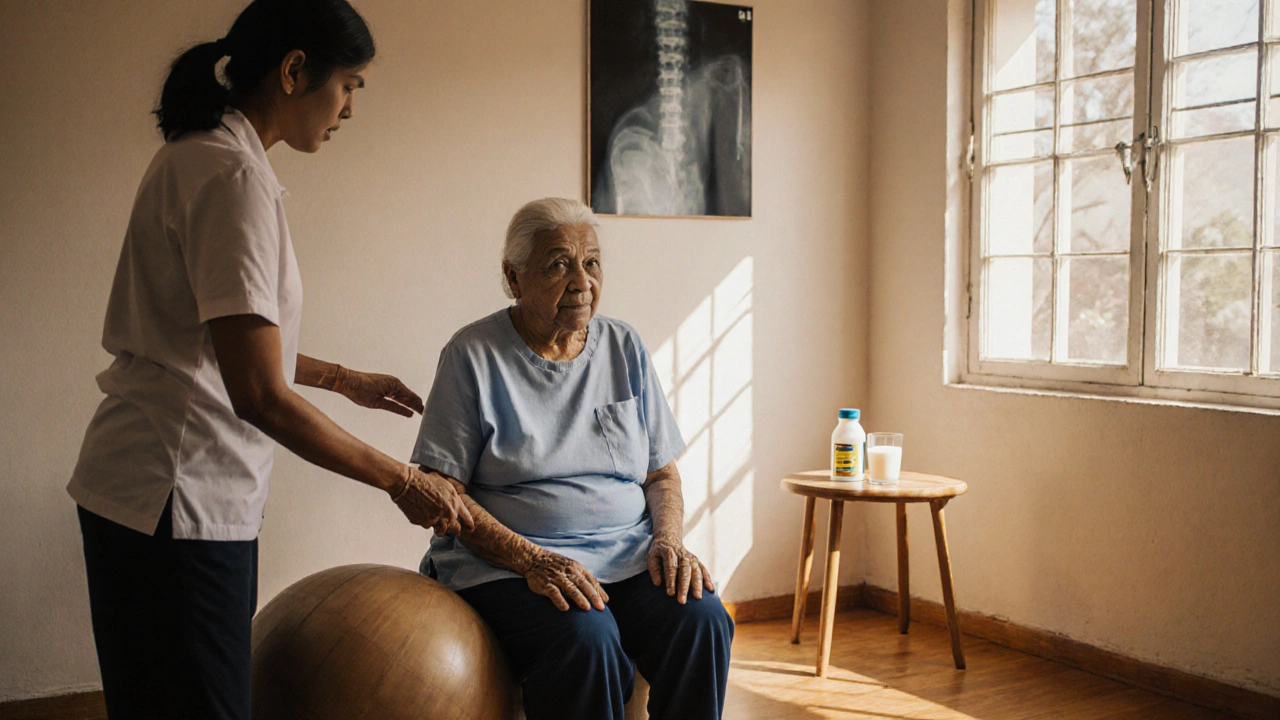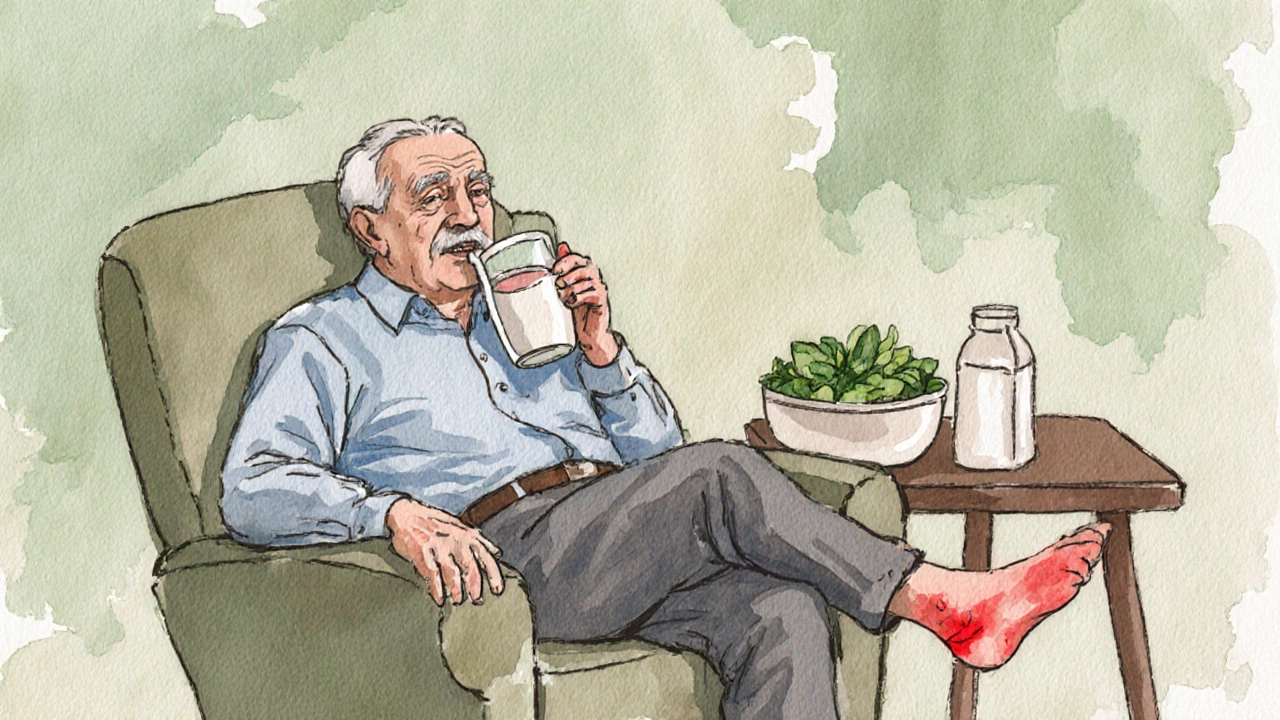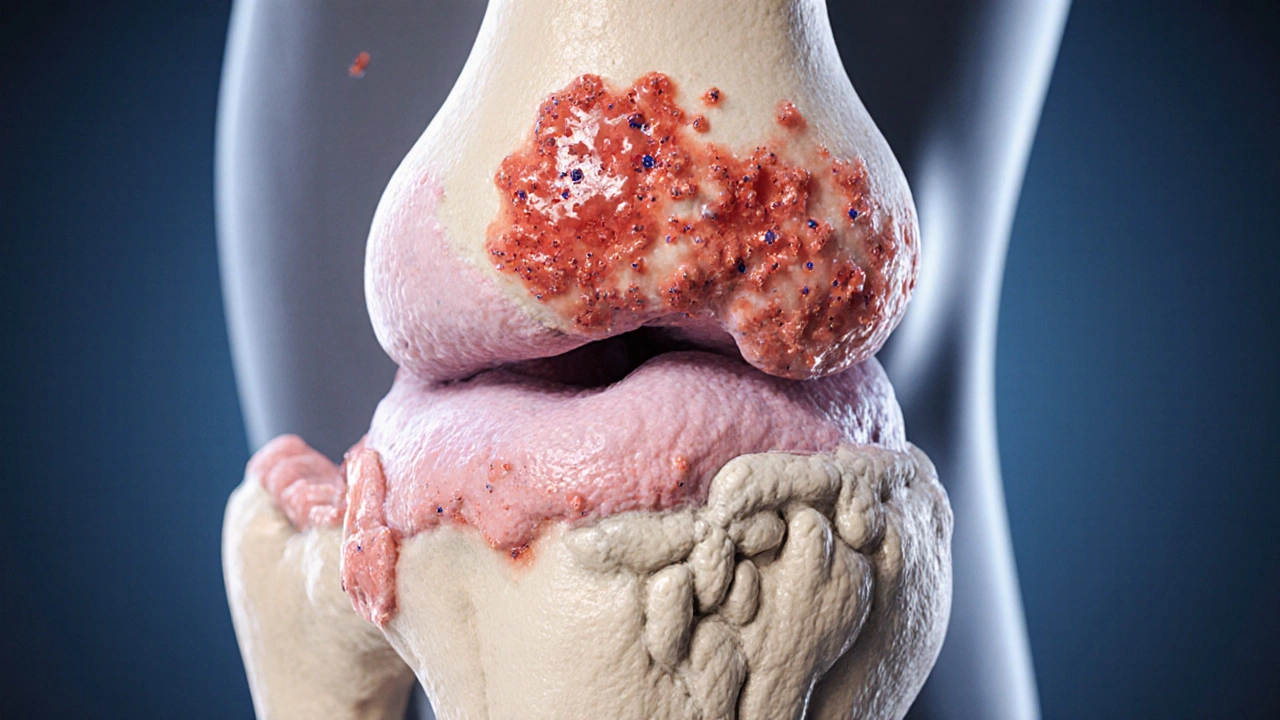Fracture Healing Time Calculator for 70-Year-Olds
Quick Summary / Key Takeaways
- In a healthy 70‑year‑old, most non‑complicated fractures take 12‑16 weeks to unite, but hip fractures can need 4‑6 months.
- Osteoporosis, poor nutrition, and chronic diseases can add 30‑50% more time.
- Early, guided physical therapy and adequate calcium‑vitaminD intake are the biggest accelerators.
- Watch for signs of delayed healing: persistent pain, swelling, or lack of motion after the expected timeline.
- Regular follow‑up with an orthopedic hospital ensures complications are caught early.
When it comes to bone healing age 70, the process can feel slower than in younger adults, but understanding why and what you can do makes a huge difference.
Understanding Bone Healing Basics
Bone healing is a carefully staged process that starts the moment a fracture occurs. It moves through three main phases:
- Inflammation (0‑7 days): Blood clots form, and inflammatory cells release growth factors.
- Repair (1‑6 weeks): Soft callus of collagen turns into a hard callus of woven bone.
- Remodeling (months‑years): Woven bone is replaced by organized lamellar bone, restoring strength.
Each phase relies on a healthy blood supply, adequate nutrition, and the ability of bone‑forming cells (osteoblasts) to work efficiently.

How Age Affects Healing
Age brings three key challenges:
- Osteoporosis reduces bone density, making fractures more likely and healing slower.
- Reduced circulation means fewer nutrients reach the fracture site.
- Cellular activity declines - osteoblasts proliferate less and osteoclasts (bone‑resorbing cells) stay more active.
Research from the International Osteoporosis Foundation (2024) shows that elderly patients have a 30‑40% longer callus formation period compared with adults under 50.
Typical Healing Timelines for Common Fractures in 70‑Year‑Olds
| Fracture Type | 70‑Year‑Old Avg. | Adult <30 Avg. |
|---|---|---|
| Distal Radius (wrist) | 10‑14 | 6‑8 |
| Clavicle | 12‑16 | 8‑10 |
| Hip (intertrochanteric) | 16‑24 | 10‑14 |
| Femur (shaft) | 14‑20 | 10‑12 |
| Vertebral compression | 12‑18 | 8‑12 |
These numbers are averages; individual recovery can be faster or slower depending on health status, fracture severity, and treatment method.
Factors That Can Speed Up or Slow Down Healing
Beyond age, several modifiable factors play a big role:
- Nutrition: Calcium (1,000‑1,200mg/day) and vitaminD (800‑1,000IU/day) are essential for mineralization.
- Protein intake of at least 1.2g/kg body weight supports collagen synthesis.
- Smoking cuts blood flow and can double healing time.
- Excessive alcohol interferes with osteoblast function.
- Medications such as chronic steroids or NSAIDs may delay bone formation.
- Comorbidities like diabetes or peripheral vascular disease impair circulation.
On the other hand, early surgical fixation (e.g., plates, screws, intramedullary nails) can provide stability that shortens the remodeling phase for unstable fractures.

Practical Tips to Support Faster Recovery
Here’s a checklist you can start using today:
- Schedule a bone‑density scan if you haven’t had one in the past year - it informs treatment and supplements.
- Take a calcium‑vitaminD combo supplement if dietary sources (dairy, leafy greens, fortified foods) fall short.
- Aim for 1.2‑1.5g of protein per kilogram - think Greek yogurt, legumes, lean meat.
- Quit smoking; ask your doctor about nicotine‑replacement options.
- Limit alcohol to two drinks per week.
- Start gentle range‑of‑motion exercises under the guidance of a licensed physical therapist within 48‑72hours if the fracture is stable.
- Attend all follow‑up X‑ray appointments at your orthopedic hospital to track callus formation.
- Maintain a healthy weight - excess load stresses fragile bones, but being underweight also reduces bone mass.
When to Seek Professional Help
If you notice any of these red flags, contact your orthopedic surgeon immediately:
- Persistent, worsening pain after the expected inflammation phase (after 2 weeks).
- Increasing swelling or a new deformity around the fracture site.
- Fever or foul‑smelling discharge - possible infection.
- Inability to bear weight on a lower‑limb fracture after 4‑6 weeks.
- Signs of nerve damage: numbness, tingling, or loss of function.
Early intervention can prevent non‑union or mal‑union, which would require more invasive surgery and lengthen recovery further.
Frequently Asked Questions
How long does a hip fracture take to heal in a 70‑year‑old?
Most uncomplicated hip fractures need 16‑24 weeks for solid union. Full functional recovery, especially walking without aid, can extend to 4‑6 months depending on rehab intensity.
Can osteoporosis medication speed up bone healing?
Drugs like bisphosphonates primarily prevent future fractures; they don’t markedly accelerate the initial healing phase. However, newer agents such as teriparatide (PTH analog) have shown modest reductions (about 10‑15%) in healing time for certain fractures.
Is it safe to start weight‑bearing exercises early?
If the fracture is stabilized surgically (plate, screw, or nail) and the surgeon clears it, early protected weight‑bearing can actually stimulate bone formation. Unstable fractures should remain non‑weight‑bearing for the first 4‑6 weeks.
What diet should I follow during recovery?
Focus on calcium‑rich foods (milk, cheese, fortified soy), vitamin‑D sources (fatty fish, egg yolk, sunlight exposure), and high‑quality protein. Adding magnesium (nuts, seeds) and vitaminK2 (fermented foods) supports remodeling.
How often should follow‑up X‑rays be done?
Typically at 2‑3 weeks to check alignment, then at 6‑8 weeks to confirm callus formation. After that, a final check at 12‑16 weeks ensures complete union before full activity resumes.
